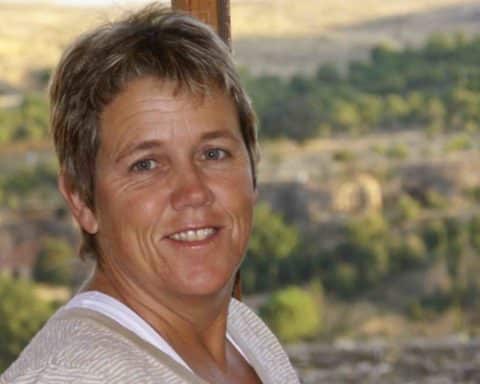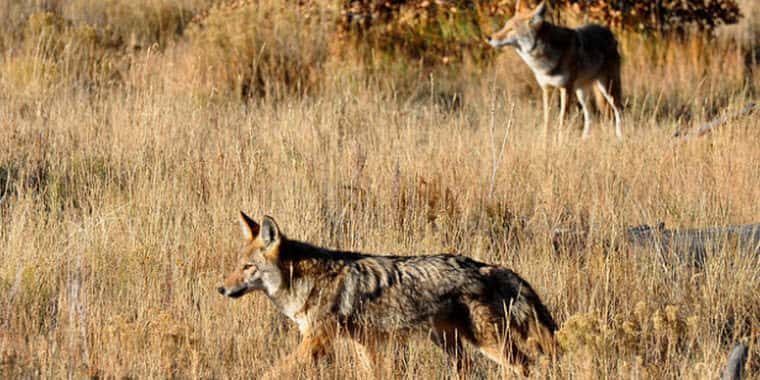By Cat Urbigkit, Reprinted courtesy of Cowboy State Daily
Just as surely as we change the clocks for daylight savings time and the weather gives us hints of spring before knocking us back with more snow, another predictable tradition is the annual media assault on USDA Wildlife Services. That’s the federal agency that specializes in animal damage management – an agency that many livestock producers (myself included) believe brings important and specialized skills to difficult situations involving predators.
In the interest of full disclosure, I serve on a county predator board that contracts with Wildlife Services for services, and I also serve on the agency’s national advisory committee representing animal agriculture.
I used to get annoyed when reading advocate-generated press releases and articles about Wildlife Services and would grumble to my husband about what words I predicted would be used in such coverage. But I’ve changed my ways, and instead of getting annoyed, I decided to make a drinking game out of it. It not only changed my attitude, but it also helps me take unscheduled naps.
Try it. The rule is simple: Drink a shot of booze every time the following words or phrases appear in an article about Wildlife Services:
“Slaughter”
“Secretive,” “rogue,” or “shrouded”
“Cyanide bombs”
“Hired gun”
“War on wildlife”
And one more shot if the article mentions Carter Niemeyer, because no anti-Wildlife Services piece is complete without a quote from Carter about the agency he used to work for. Now that he’s retired from the federal government, apparently he’s learned the error of his ways and is the darling of the wolf-advocacy crowd.
It’s usually WildEarth Guardians leading the charge against Wildlife Services, generally primping and recycling the same press release every year:

But this week it was a Spokesman-Review article which relied heavily on criticism from Brooks Fahy of Oregon-based Predator Defense, an organization opposed to the hunting and trapping of predators, as well opposed to public lands livestock grazing. Among his organization’s stated beliefs is that “Predators cause insignificant livestock losses for ranchers. Most losses are caused by poor animal husbandry.”
Fahy was quoted in this week’s article that if livestock producers lose livestock to predators they simply need to do more to prevent such attacks. “This isn’t rocket science,” Fahy said. “If you’re doing it the right way, you’re not going to have a problem.”
Yeah. I so enjoy reading comments from some far-removed dude with an agenda indicating he knows more about livestock husbandry than the people actually doing the work.
Critics complain that Wildlife Services kills more than a million animals every year. That sounds so terrible. More than 70% of those animals were either an invasive species (feral swine, or European starlings, etc.) or a native blackbird that the U.S. Fish & Wildlife allows to be killed in damage situations. About 60,000 of the animals killed were Northern pike minnow removed to protect federally endangered and threatened salmon and steelhead in the Pacific Northwest.
Other birds were killed to prevent bird strikes at airports, a problem which currently causes more than $600 million in damage to civilian aircraft in this country every year, in addition to posing a threat to human lives. Every year, Wildlife Services specialists relocate thousands of hawks and owls away from airports, and worked to develop practices that would increase the likelihood of success of such translocations.
While the critics like to point to the “millions” of animals killed by Wildlife Services, what they are really galled about is the killing of native predators. For example, in 2021, Wildlife Services killed six grizzly bears, a federally protected species.
In the early morning hours of July 6, 2021, a grizzly bear pulled a bicyclist from her tent in the small town of Ovando, Montana, and killed her in a predatory attack. An interagency team of bear specialists and law enforcement officers quickly came together to investigate the tragedy, work to keep other community members and visitors safe, and worked to find the bear responsible. After several intense nights, wildlife damage control specialists with USDA Wildlife Services located the large male grizzly bear and killed it a few miles from the attack site.
While most of the federally protected species killed by Wildlife Services are taken due to conflicts with livestock, it’s important to know that these “takings” are done under the direction of the U.S. Fish & Wildlife Service, the federal agency charged with management of endangered and threatened species. The killing of these animals does not hinder the recovery of the species, and the actions are always taken in attempt to stop a damage situation. But that’s not what makes the headlines. Only the “slaughter” by Wildlife Services generates the clickbait.
Wildlife Services also kills coyotes, thousands of them every year around the country. Coyotes kill more than 300,000 head of livestock every year and injure even more. In addition, some control actions are in response threats posed to the public – because coyotes attack and injure humans every year. Coyotes are one of the most widespread predators in the country, and the Wildlife Services program does not jeopardize its survival in any way. Those who believe that if we leave coyotes alone they will not bother your livestock, your pets, or your children, believe in a fantasy.
Wildlife damage to U.S. agriculture (including livestock, aquaculture, grains, crops, fruits, vegetables, etc.) has been estimated at nearly $1 billion annually, with predators causing more than $230 million in livestock death losses each year. Lethal control is just one of the actions used by Wildlife Services as it works to prevent, minimize, or manage the damage to agriculture and other private and public property, while protecting human health and safety.
The other good work by Wildlife Services, in controlling rabies, developing fertility control methods for wild animal populations, wildlife disease research and surveillance, development of wildlife repellents, and testing and advancing preventative measures to deter predators, don’t get much play in the media. Instead, what we get is the annual regurgitation about a rogue agency out to kill animals. Don’t fall for it. Use the opportunity to try the drinking game, or take a nap. Cheers!
###

Cat Urbigkit is a rancher and an award-winning writer and photographer based on a working sheep and cattle outfit near Pinedale in Sublette County, Wyoming. Involved in journalism in Wyoming for 25 years, Cat has written more than a dozen nonfiction books about the domestic and wild animals that share rangelands in western Wyoming. She is co-owner and editor of The Shepherd magazine, a national sheep industry publication.”


